25. RWI - How many digestive biscuits is too many?
a recipe for digestive biscuits and asking what the deal is with heritage grains.
Hello,
Welcome to another edition of Roll With It, I’m so happy to share it with you!
In my January newsletter I wrote about how I was embracing the timeless practice of ‘wintering’, which is when humans give themselves permission to rest and restore during the cold, dark winter months, just as nature does. As the seasons now begin to shift, there is an audible sigh of relief in the streets as jumpers are tied around waists, pub gardens spill over, and crocuses peek out from the earth. I can feel this lightness as I begin to step out of my hibernation into the warmer, brighter days that lie ahead. I hope you do too.
Much Love,
Cissy…xo
March began with a similar eruption of energy as the recent Spring equinox, as I booked a last minute flight to Dublin to see my friends and celebrate my Scéal Bakery family turning 1 in their new Greystones location. Boy, do they know how to turn it up for a birthday! Collaborating with the notorious pizza slice shop Bambino, they attracted a queue of people that snaked along the waterfront for what seemed like miles. Amongst the joyful mayhem I managed to sneak in some much needed hugs and a little tub of tiramisu for the road.
As the month went on, the bind to Ireland continued as we celebrated St Patrick’s Day at work (Quince Bakery) with a very special menu. This included batch loaves, soda bread infused custard buns, barmbrack scones, colcannon pies, barley malt cake, dulse and Gubbeen scones, Gur tart, Templegall and Guinness chutney sandwiches and some very special Tayto finger sandwiches for the weekend that was in it.
I even managed to sneak a table at the hotly sought after Gareth Storey x Assasination Custard dinner at Tollingtons fish bar, which swept me back into Ken and Gwen’s tiny (sometimes open, sometimes closed) restaurant in Dublin eating tripe, fava beans and beef cheeks in Guinness.
These little reminders of Ireland are good for my soul. They keep me connected to the people and places there that I love so much.
This all happens to coincide with an article that I’m writing for Ómós Digest (coming soon), which discusses my rumbling thoughts about how people’s heritage influences what they bake. Specifically it draws on my experiences working at Quince, which is a bakery led by ingredients and products native to the British Isles. As you can tell with one glance at the bakery’s Instagram page (or visiting yourself), the menu is unlike most others in the area. It consists of an array of traditional cakes, pastries and yeasted doughs (some you might not have heard of), such as Tottenham cake, Ecclefechan tart, Cornish pasties, laverbread scones and cranberry and nutmeg iced finger buns. This style of baking is mostly driven by the seasons but it is also steered by the team and Anna’s (owner) Scottish roots.
Taking inspiration from the past and your own culture isn’t necessarily a new concept, however it does feel like a new(ish) approach in the bakery world and it seems to be having a revival as of late. There definitely seems to be a movement away from perfect, complicated baking to the more rustic and simple. (Would love to hear your thoughts on this - what do you prefer?).
So what does this have to do with me?
Working at both Quince and Hamblin Bread over the last few years has made me think more about the types of things I like to bake and why, and whether this is affected by my upbringing and culture. It’s something I’m trying to dig deeper into as I think about my future in the industry, as I ask myself, ‘how do I best showcase who I am through what I bake?’. An especially important question when thinking about how my recipes might translate to a reader who buys a book I write, or how a menu at my (future dream) bakery/studio will be enjoyed by customers. (More on this in my Ómós Digest article).
As I continue to hypothesise, I thought I would write about the other important meaning of heritage, which for of baker is of course all about grain.
What’s the deal with heritage flour?
In simple terms, heritage grains are old varieties of wheat, oats, rye and barley. Why are they important? Well, during the ‘Green Revolution’ of the 1960s the production of these grains were abandoned in favour of more uniform and higher yielding monocultures (the cultivation of a single crop). Think, picture perfect, short stemmed, golden wheat fields. Why is this a problem? Farming monocultures relies heavily on intensive farming practices - heavy machinery, pesticides, fertilisers etc. All of which depletes the soil, has a negative impact on the surrounding biodiversity and increases the plants risk of disease (to name a few).
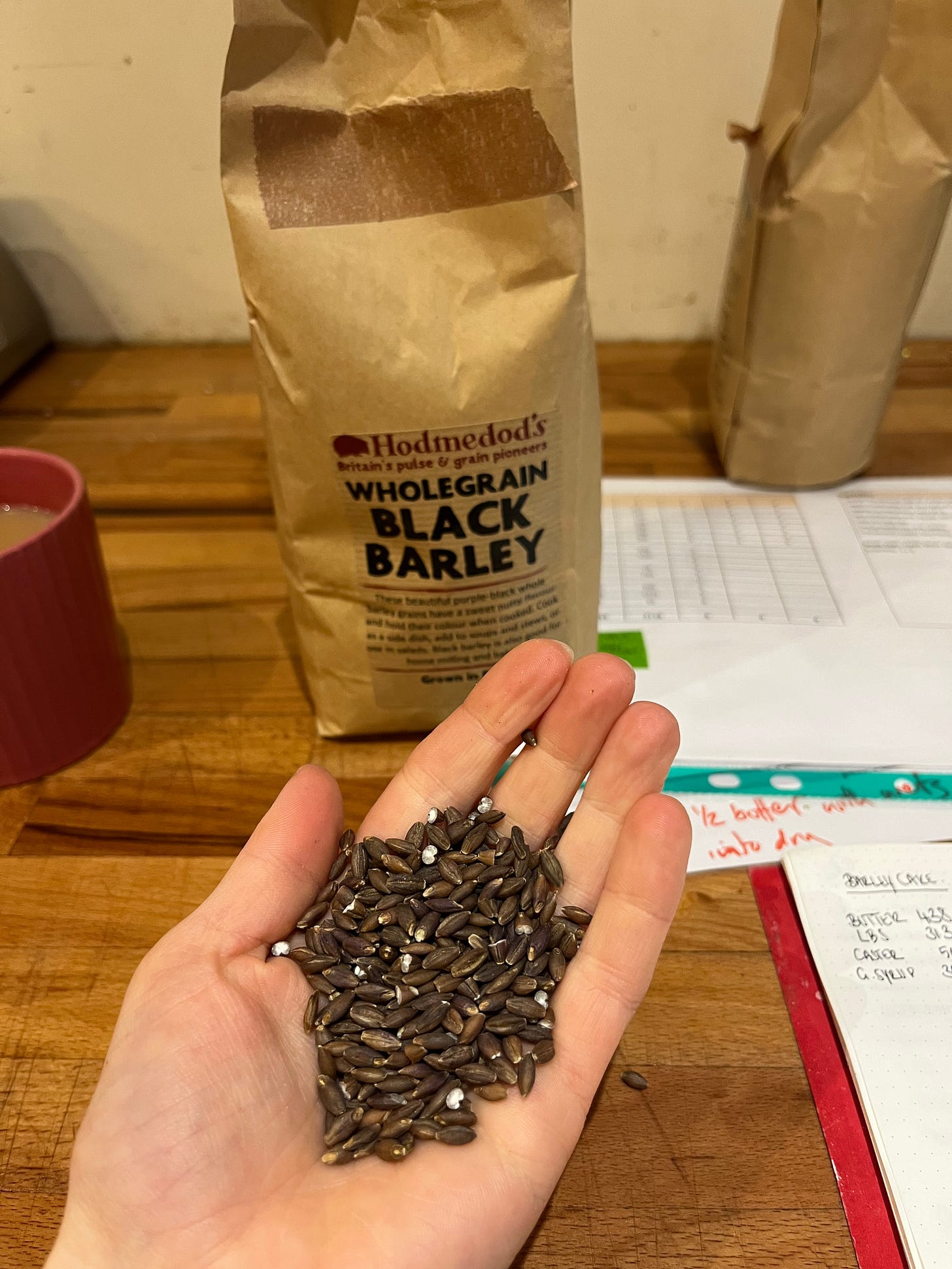
In recent years, the revival of regional wheat varieties has sought to oppose this way of farming. These landrace crops are better at adapting to their environment and growing soil, making them more resilient to the erratic weather patterns we’re experiencing (although not completely resilient to severe flooding). These plants also have deeper root systems (which means it is able to search for essential moisture and nutrients in the soil) and tall, grass-like stems (which puts a distance between the seed head and any disease in the soil).
Flour milled from these grains provides a superior flavour and gives your body more nutrients, minerals and vitamins per gram compared with what we know as modern wheats.
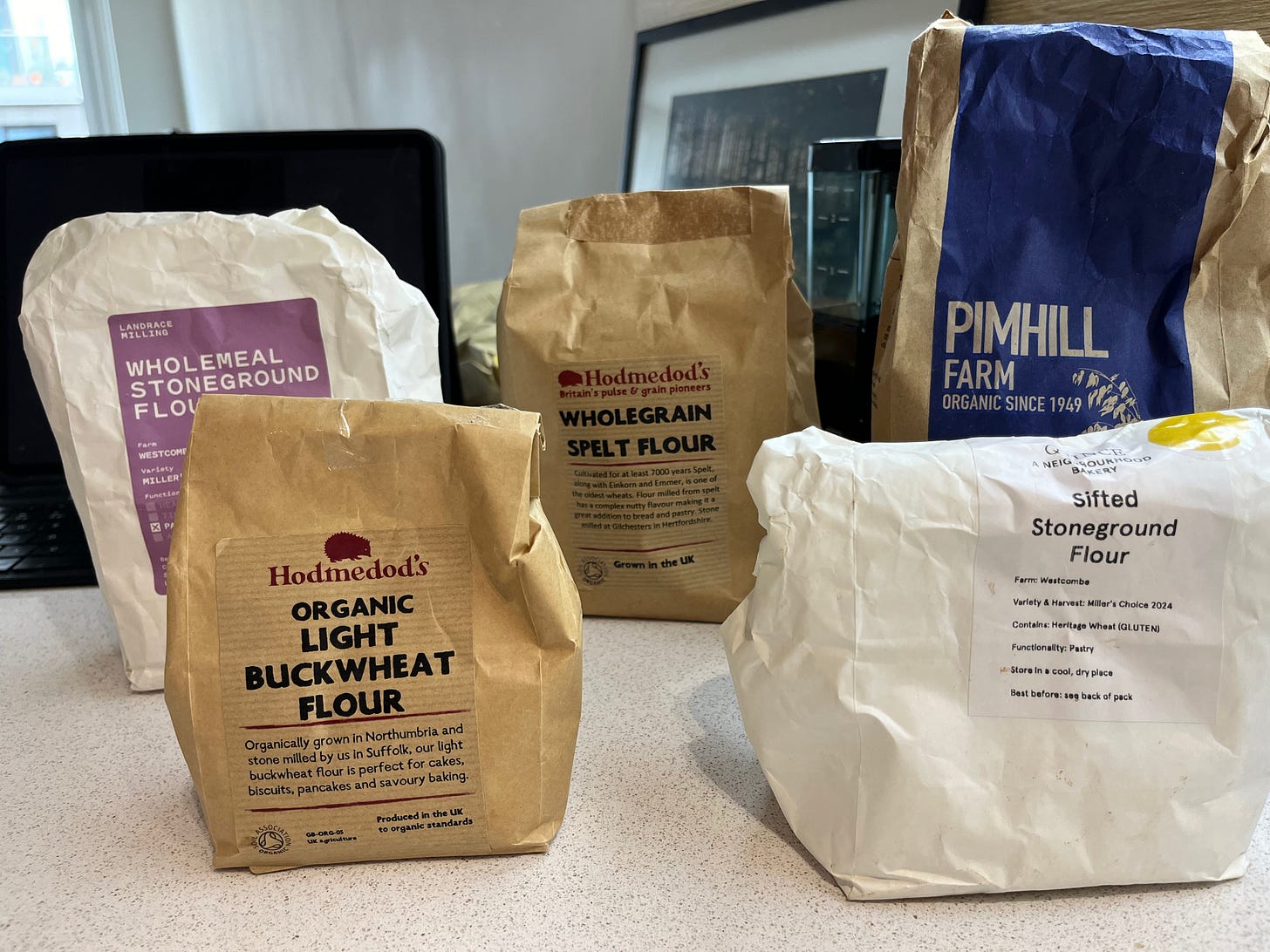
These days it’s quite easy to find more common heritage flours (such as emmer, einkorn or spelt flour) in your local supermarket or grocery store. However, I encourage you to dig a little deeper and source some more unusual ancient grains by chatting to the staff at your local bakery or buying from online shops (such as Hodmedods or Bakery Bits).
Here are a few links for reading and listening, by individuals in the industry who can say it far better than me.
A database for wheat varieties, by Andy Forbes of Brockwell Bakes
A six part series about the world of cereals, from grain to loaf by Farmerama
For this article I’ve decided to go back to my childhood and recreate some of my favourite biscuits using heritage flours. I hope this will give you a little introduction into how to use them as well as make you think more about how flour is flavour. Perhaps even making you feel confident enough to start experimenting with different grains.
Digestive Biscuit Recipe
What’s not to love about a digestive? They are perfect dipped in tea, or covered in chocolate, or even topped with cheese and chutney. But what’s even better is that they are actually very easy to make. This recipe uses a blend of spelt and wholewheat flours. Warning - they are incredibly moreish.
Makes 12 biscuits
Equipment
food processor
3” pastry cutter round
rolling pin
Ingredients
70g rolled oats
130g unsalted butter, cold, cubed
95g spelt flour
95g wholewheat flour
3g bicarbonate of soda
3g baking powder
3g fine sea salt
40g light soft brown sugar
20g honey
20g yoghurt
Method
Place the oats in a food processor and blitz to a fine crumb.
Add in the cold, cubed butter and pulse until coarsely combined.
Add in the flours, bicarbonate of soda, baking powder, salt and light soft brown sugar and pulse a few times to blend.
Add in the honey and yoghurt and pulse until a dough forms.
Tip the dough out onto a large sheet of parchment and form into a rectangle.
Place another large sheet of parchment directly on top of the dough, and using a rolling pin, roll the dough out until it is around 0.5” thick.
Remove the top sheet of parchment and cut as many discs as you can with a 3” round pastry cutter.
Carefully separate the cut biscuits from the sheet of dough and arrange onto a large tray lined with parchment, leaving a small gap between each biscuit. (Each biscuit should weigh between 30-40g).
Gather up the remaining scraps of dough and repeat the steps above until there is no more dough left.
Chill the biscuits for 30 minutes.
Preheat the oven to 180c.
Bake the chilled biscuits for 10-12 minutes, or until golden.
Allow to cool before eating.
Tips
If you don’t have a food processor you could swap the rolled oats for oat flour and use your fingers to gently rub together the ingredients in a large mixing bowl.
For a chocolate dipped digestive, melt 150g milk or dark chocolate over a bain marie and dip each baked but cooled biscuit into the chocolate. Allow to set over a wired rack.
These also work well topped with local cheeses and chutneys.
Mix in 100g marmalade to the dough before rolling out for a floral and sweet, citrus flavour.
At work we have a small tabletop mill (Mockmill) which is a great way to mill fresh grains into flour, including oats.
More recipes using heritage flours to follow in my next newsletter, Roll With It Some More…




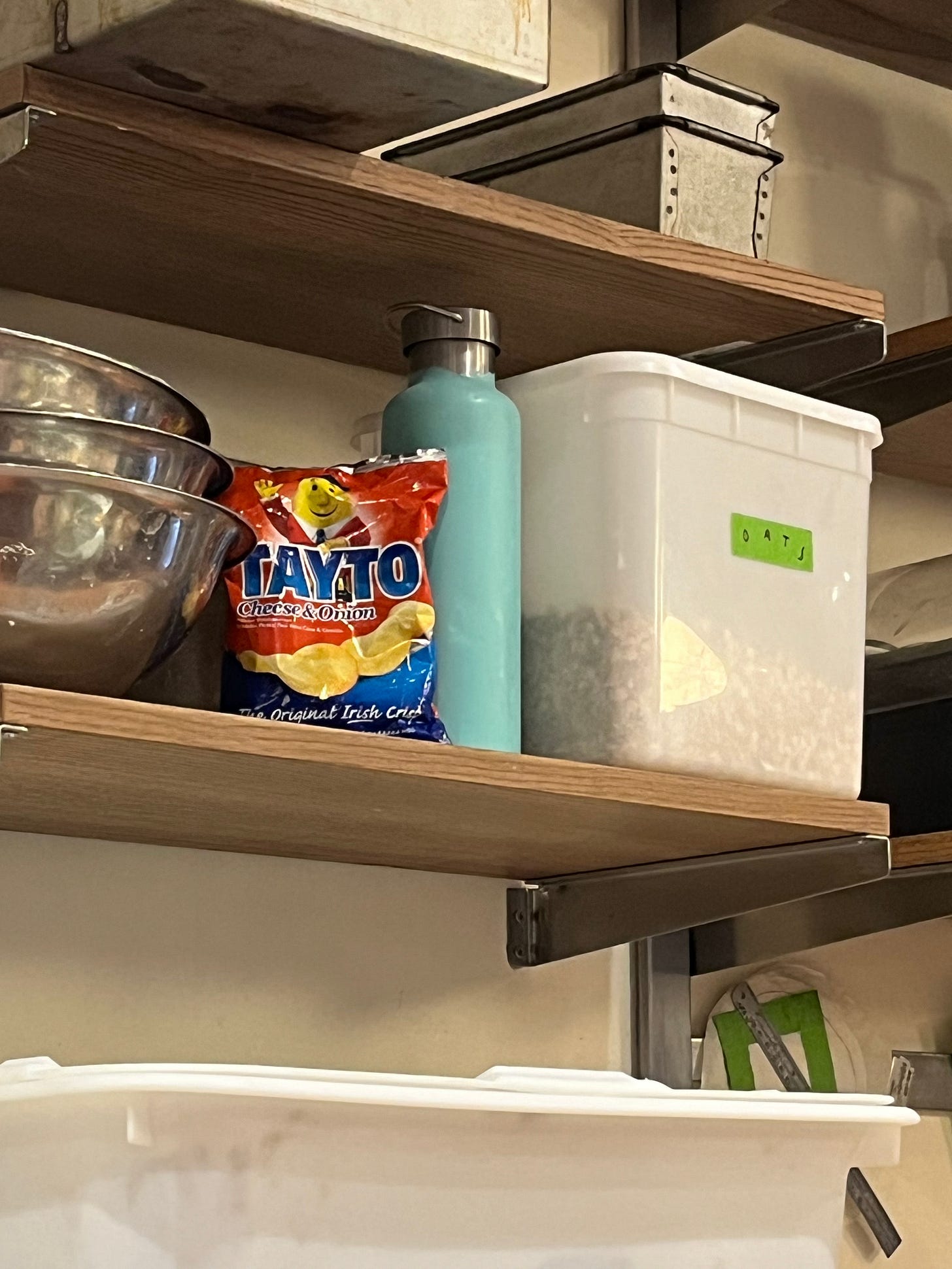
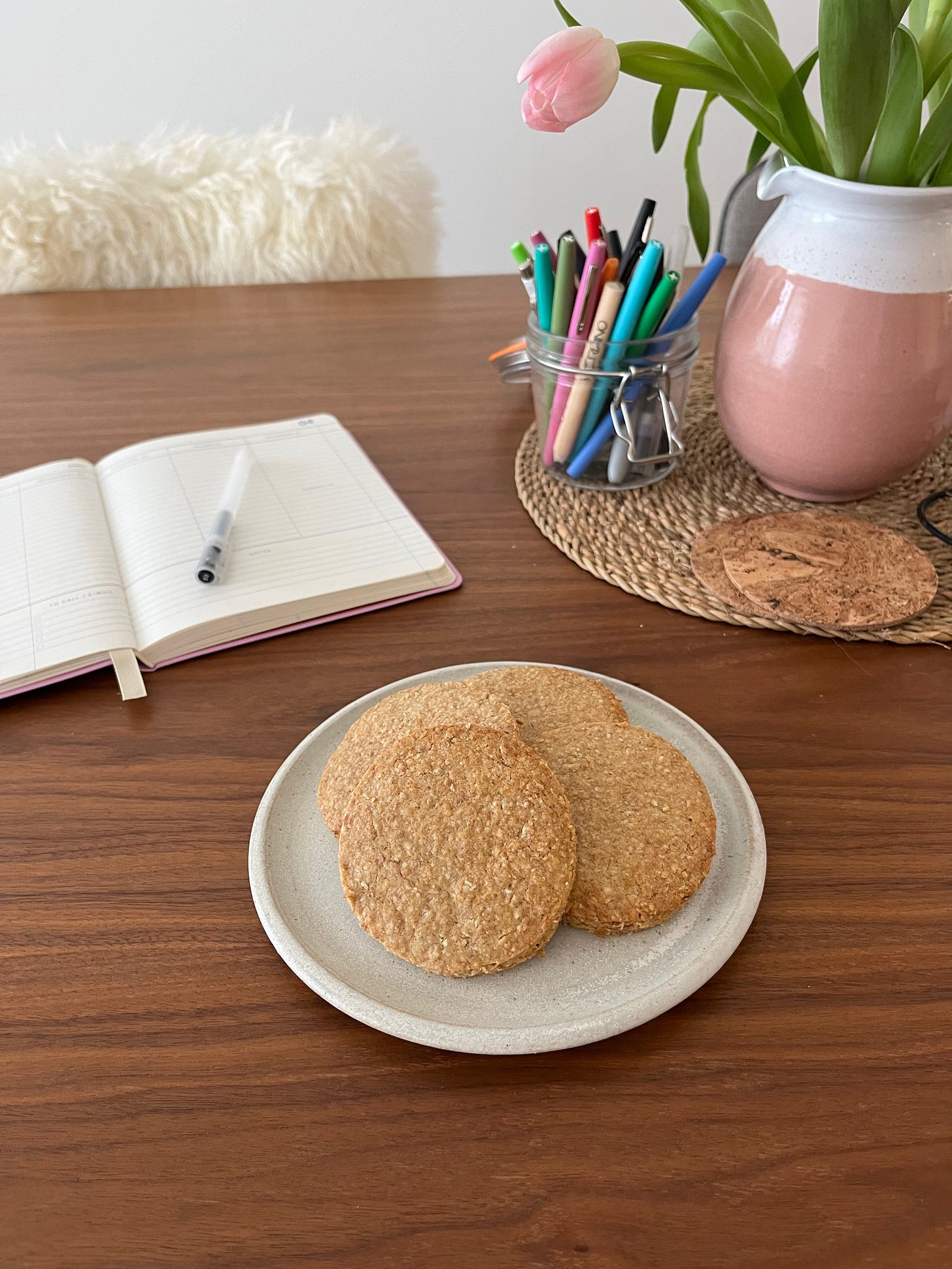
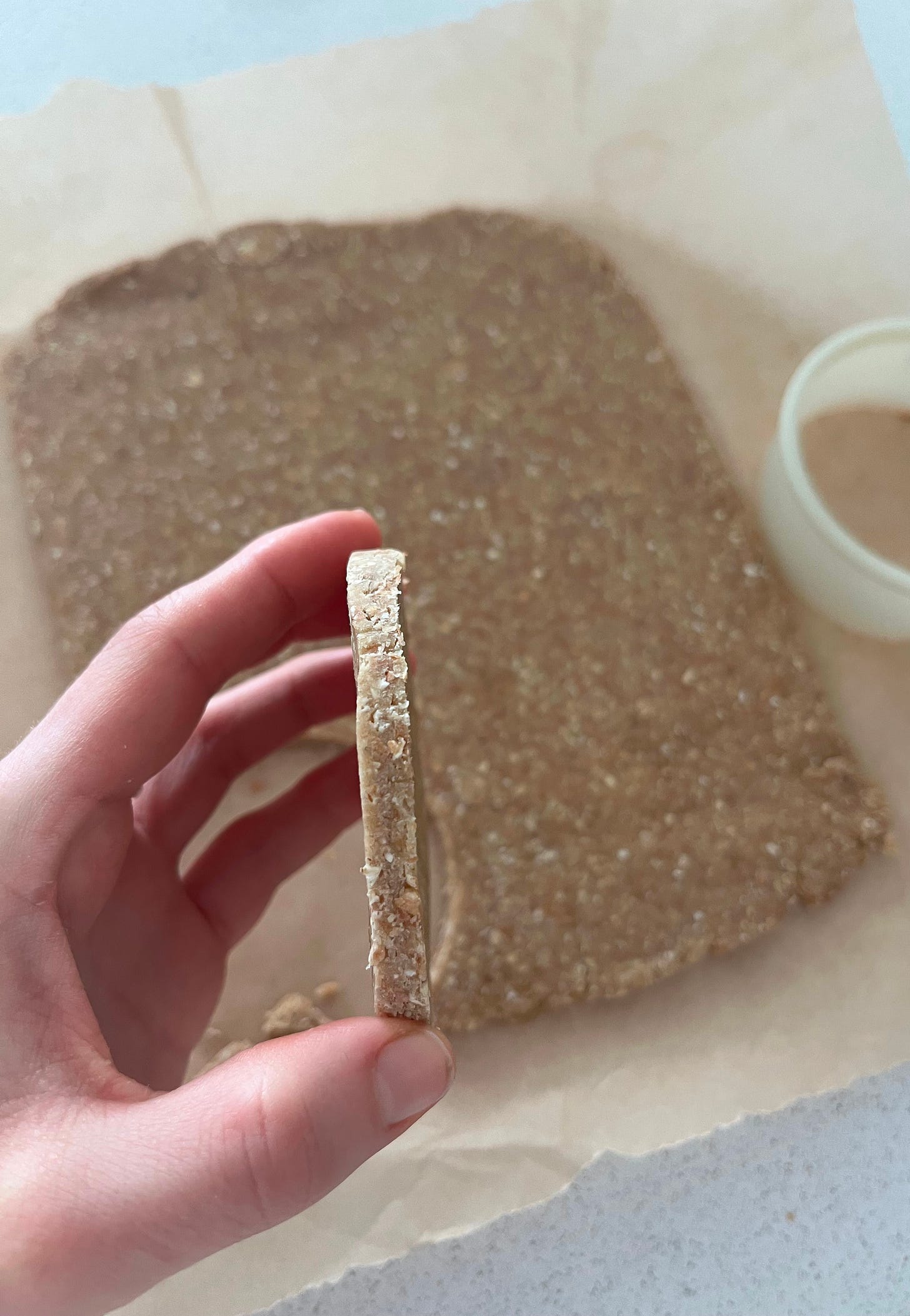
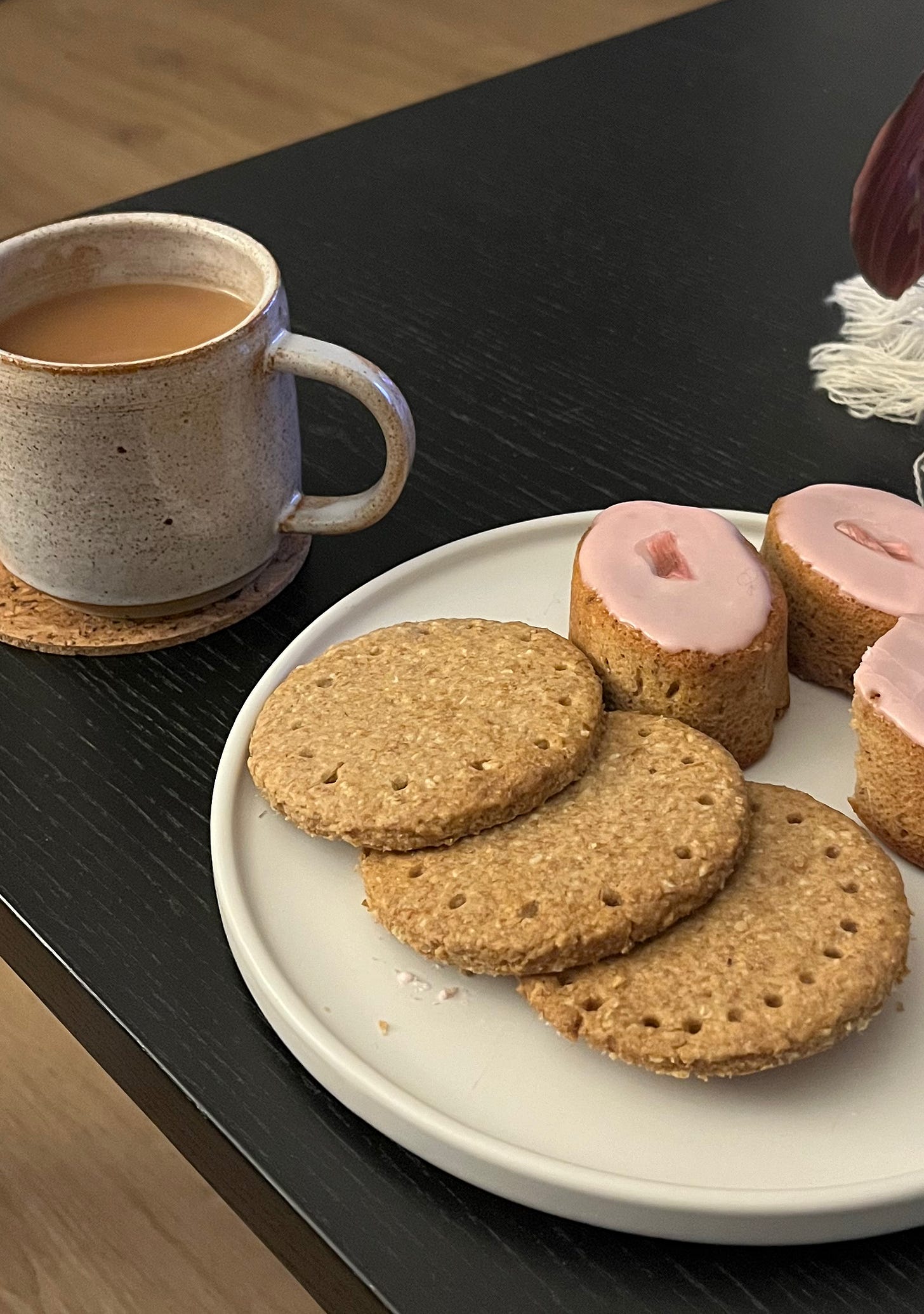
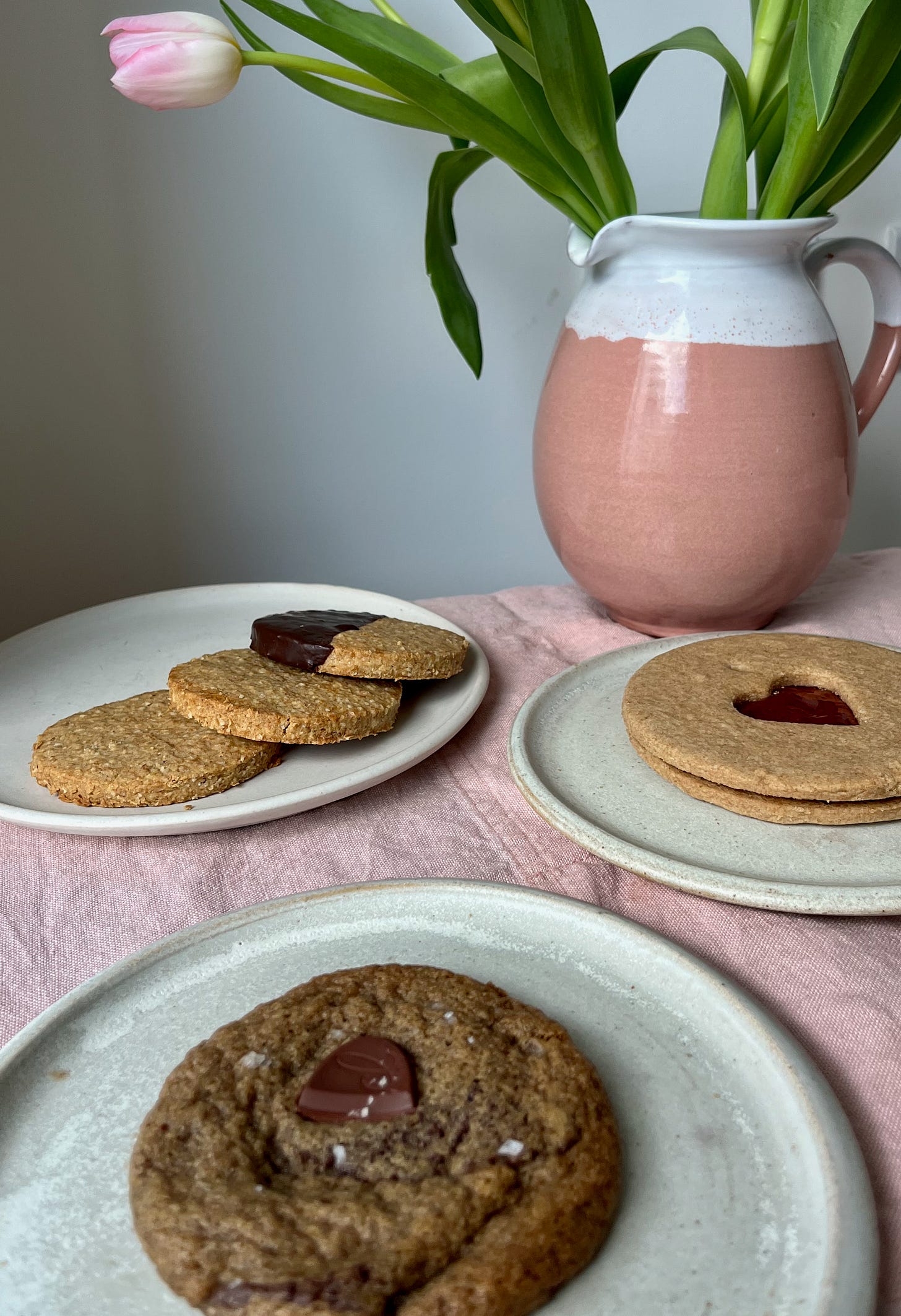
Yes love this Cissy, very much my style of baking, inspired by classics but with a focus on local produce. Showcasing the pride in our heritage, food history and sourcing, respecting the past but with contemporary flair, well I hope! X
Oh my goodness! Homemade digestive biscuits sound delish! So glad Julia linked your substack. I will have to take some on my next hike to.keep the bad guys away. ;). I am, unfortunately, better at appreciating great food than making it. But I am trying this one.
Thanks! https://rightfootforward.substack.com/p/a-killers-cave-and-a-new-car